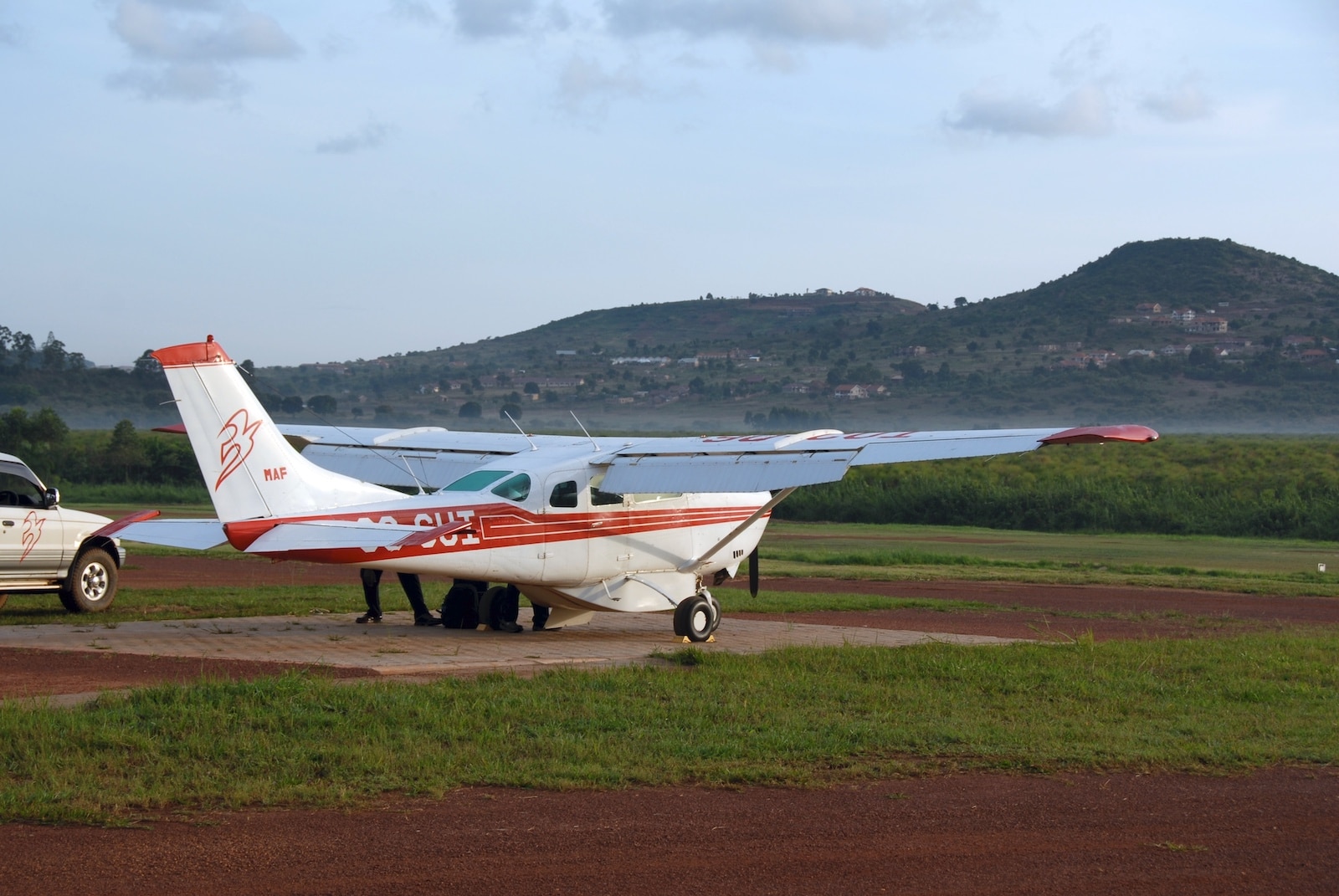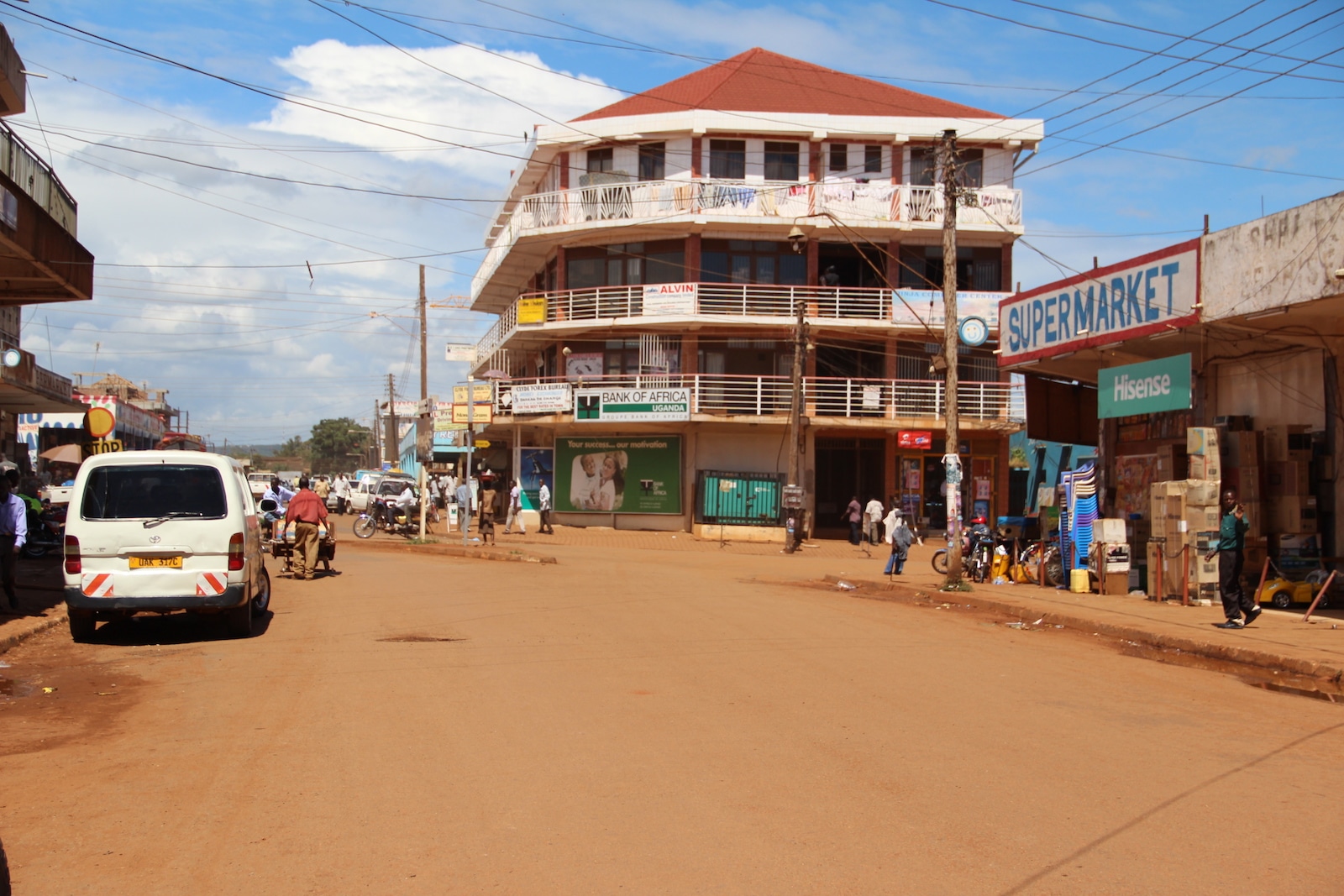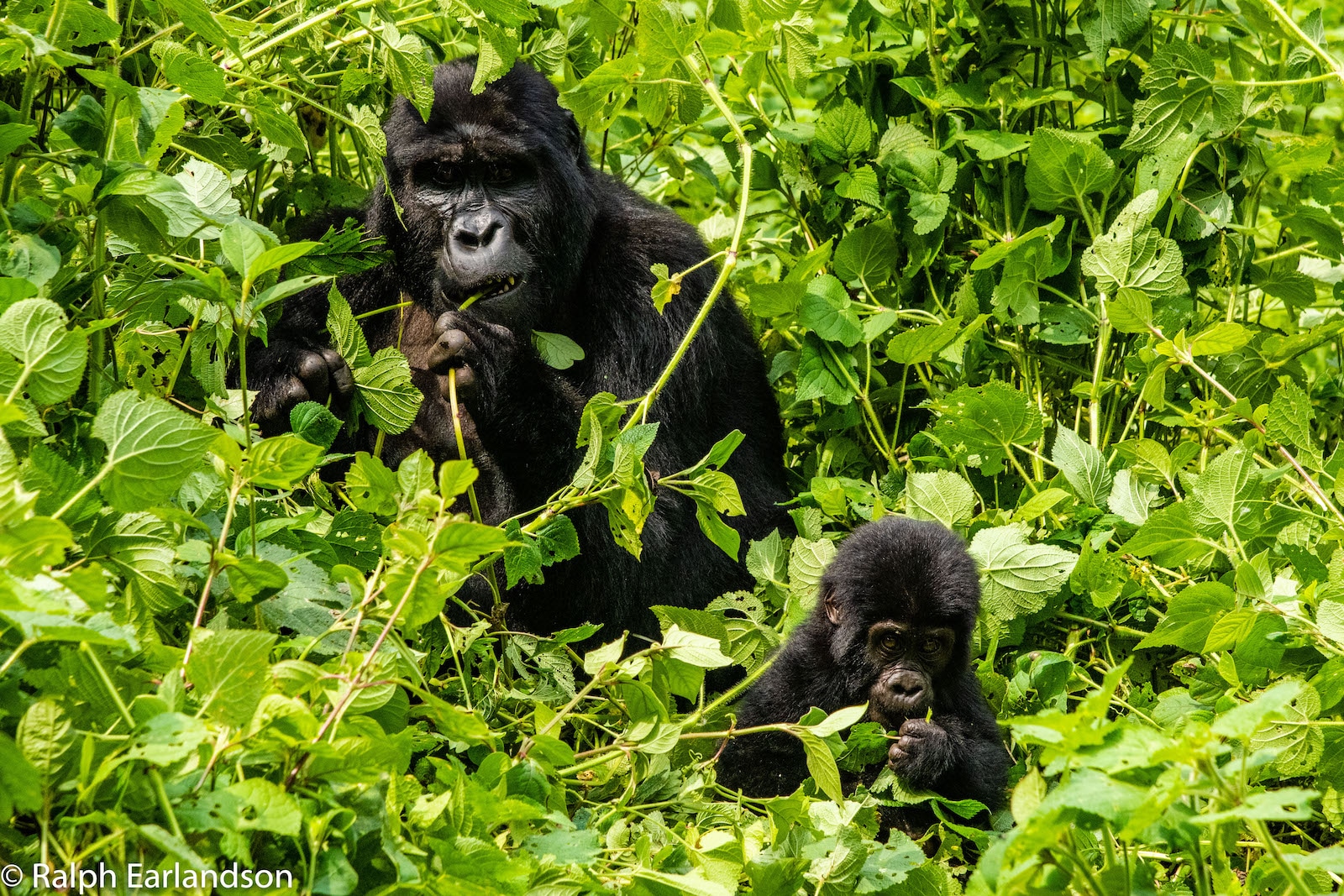Home to some of Africa’s most famous and stunning natural wonders, Uganda was once called the “Pearl of Africa”. Boasting the highest number of mountain gorillas worldwide, the country is the ideal place for those who want to see the world’s largest number of primates.
While political turmoil in the 1970s diminished confidence within the country, stabilization has been a key to rebuilding tourism within Uganda. Today, Uganda is once again a safe tourist destination, and its brilliant scenery and vast landscape make it hard to miss.
Karibu – Welcome to Uganda!

From the Rwenzoris mountain range to the Nile River and Lake Victoria, Uganda’s landscape is a tapestry of colors and climates. While Ugandan safaris may not be as famous as those that are hosted by Kenya and Tanzania, the smaller parks and game reserves in Uganda provide an intimate view into the life of Africa’s amazing animals.
With the chance to see Africa’s Big Five, hippos, and gorillas, Uganda is a popular destination amongst nature-loving tourists. Hugging Lake Victoria, Kampala is the capital of Uganda, which has been nestled in a series of hills.
The city has been divided into sections with each part focusing on a certain industry or business. The commercial and residential areas are the most popular amongst tourists, while the industrial area is left to its business.
Once the capital of the Buganda Kingdom, the city is full of contrasts between the rich and poor, old and new. Traces of the country’s colonial past can be found throughout Kampala, while modern hotels and gardens are paving the way for a new tourist industry.
- Culture and Language
- Spending Budget
- How to Get Around
- Top Cities to Visit
- Points of Interest
Culture and Language

Uganda’s history is long, much like most of Africa’s. Historians have found proof of human activity dating back 50,000 years, but some estimates state that it could extend as far back as 100,000 years. The first people who cultivated the area were most likely Bantu-speaking tribes who spread throughout the region.
Uganda History
The history books become rather vague as Uganda expanded and the country eventually became a protectorate of the British Empire, which lasted from 1894-1962. As a protectorate of Britain, Uganda constructed a railway and began to industrialize cotton and other textiles.
By 1962, Uganda became an independent nation, but it maintained its Commonwealth membership with the British Empire. While Obote, who was the prime minister at the time, sought to keep the power within the kingdom, the country turned against the monarchy and chose to give all the power to the president.
This ultimately led to the abolishment of traditional kingdoms as the country turned into a republic. However, Uganda is one of Africa’s poorest nations and in 1971, a military coup overthrew Obote and put Idi Amin in power. Idi Amin was a military leader and dictator, who would rule Uganda for 8 years.
Under the 8-year rule of Amin, Uganda suffered as he carried out mass killings and drove the country into economic decline. Other issues included human rights violations and social disintegration.

While Uganda’s history may not be as famous as other African nations, it was turned into a famous book and Hollywood movie, both of which are titled The Last King of Scotland. While the story is partly fictional, the story covers part of Amin’s dictatorship in Uganda and the film even won an Academy Award.
In the late 1970s, Uganda entered into the Uganda-Tanzania War. Tanzania’s President Nyerere was supportive of Uganda’s previous president, and he helped him attempt to regain power in the early 1970s. However, the rebellion did not go as planned, and for the next 8 years, the relationship between Tanzania and Uganda deteriorated.
Starting in late 1978, the Uganda-Tanzania War began with Tanzania invading Uganda. The war ended in 1979 after it was able to successfully overthrow Amin. Since 1979, Uganda has stabilized as the government ended atrocities like human rights violations.
The country has also seen an expansion of freedom as the press has been reformed and is allowed to freely report on current issues. While Uganda still has a long way to go, it has emerged victorious from its darkest days.
Ugandan Culture

Amongst the dozens of ethnic groups, Ugandan culture has always been warm, welcoming, and full of celebration. The people have always welcomed outsiders, whether they are refugees from neighboring countries or international visitors.
Dances are an important part of the culture and are commonly performed in ceremonies or for special occasions. Friendship is important to the Ugandan people and taking the time to connect with the locals can help you forge new relationships.
Official Language
Much in tune with their cultural diversity, Uganda is a multilingual nation. Most languages within Uganda are a part of the Bantu, Central Sudanic, or Nilotic families. However, the official language in Uganda is English.
English was introduced by colonizers and it has remained an important part of Uganda as it’s used for education and mission work. However, even though English is used throughout the government, media, and education, not all of the country’s 47.12 million citizens (as of 2021) can speak it.
Most English speakers will live in tourist areas, work within the tourist industry, or live in a big city. In more rural areas, people will likely speak the language that is native to their people or tribe. Another popular language that is spoken throughout Uganda and all of Africa is Swahili, which is used as a common language amongst tribes who speak different languages.
Spending Budget

Any time you research the cost of a trip to Africa, you’ll likely come across a wide range of prices and trip cost estimates. One reason why it can be difficult to plan a trip to Uganda and estimate the cost is that the price of some activities is much more than others. The same can be said about accommodation and transportation.
With options for backpackers and luxury vacationers, Uganda can cater to every traveler’s budget. Even if you have more funds for a vacation, a spending budget can help you estimate the costs of visiting Uganda. Your spending budget for Uganda should include the cost of airfare, accommodation, food, drink, transportation, and safaris.
Airfare
While some costs on your trip might be friendly towards limited budgets, the cost of a flight is one part of your vacation that’s expensive and unavoidable. The average cost of a flight from the United States to Uganda is over one thousand dollars, although some airlines have special deals.
The price will fluctuate and is usually higher when it’s tourist season. There are two different peak tourist times in Uganda, from December to mid-March and July to August, which align with the dry seasons. It’s during these months that tourists are most likely going to visit Uganda with the holidays of Christmas and New Year’s being the ultimate peak.
Accommodations

Once you’ve established the dates of your trip, you will need to start booking your accommodation. If you’re traveling during the peak tourist seasons, it’s important that you make your reservations in advance or else you risk not being able to find an open room.
Hostels are the most affordable accommodation option, meanwhile, a standard hotel will be around double the price. The best hotels and lodges will cost a few hundred per night and will require you to increase your budget. Luxury experiences will be the most expensive and could be thousands of dollars, depending on where you go.
Food
Unless you have booked a safari or lodge that includes meals, you’ll need to add food costs to your budget. While Ugandan cuisine is not well known, it’s a great way for visitors to explore the local culture. Ugandan cuisine is based on starchy foods like potatoes, cornmeal, and beans. Other favorite ingredients include cassava, peanuts, and plantains.
One of Uganda’s favorite dishes, which dates back to the Buganda Kingdom is luwombo. Luwombo is a stew made of beef, chicken, and vegetables. Served alongside many dishes like luwombo and other soups is posho, which is a mix of white corn flour.

Ugandans also love to roast meat, which they call muchomo. The meat can come from any animal, but the most popular choices are beef, chicken, pork, and goat. Most of the time, you can find it in street stalls as the meat is simply grilled on sticks and served with gonja (plantains).
For breakfast, you might want to try katogo, which is a traditional and hearty meal that is eaten in the morning. A mix of beef, beans, and vegetables, this dish may also feature cassava or sweet potatoes.
Dining
With fresh ingredients and unique flavors, you can’t go wrong with a good Ugandan meal. Food in Uganda is also inexpensive, and most travelers can get by with a budget of a few dollars a day for their meals. Local restaurants are very affordable while tourist areas and luxury lodges will be more expensive.
They will still be very well-priced though, so don’t worry about spending too much and enjoy trying the cuisine. While there are not many options for alcoholic beverages in Uganda, there are a few local and imported beers. Most drinks in Uganda will cost a few dollars, even for an entire bottle of wine.
Safaris

The unique wildlife in Uganda has made it the perfect place to take a safari. Whether you want to explore the grasslands, the banks of the Nile, or the gorillas, you will need to pay for a safari. The parks and game reserves in Uganda cost money to enter and their fees are often covered in the price of a safari.
In addition, you are much safer going through the parks with a guide who knows the area and can take you to the best wildlife spots. Ugandan safaris have a wide range of prices with the least expensive being a few hundred dollars for one night, however, they can cost much more than that.
If you want to experience the beauty of Uganda on a budget, your best option would be to visit a park or game reserve on your own. Unless you are visiting the gorillas, most parks will charge a modest entrance fee per person.
While you can visit Bwindi National Park by simply paying for entrance, you cannot access the gorillas without purchasing a permit, which is hundreds of dollars.
How to Get Around

Another big cost will be transportation. Safety can be an issue in Uganda, and it’s important that you pick safe methods of transportation to get around. With poor road conditions, a four-wheel drive is also required to get around Uganda.
Private Driver
By far the safest and most popular way for tourists to get around is with a hired driver. While you can rent a car, it can be a big challenge if you are not familiar with bush driving and there are steep fines for hitting animals or going off track.
Hired drivers are a great way to get around safely and you don’t have to worry about getting lost, although they can be expensive.
Flights

The fastest way to travel is by using airplanes, which could transport you from park to park. However, flights in Uganda are very expensive and you should expect to pay a few hundred dollars for a one-way trip.
Buses
If you are on a tight budget and are willing to attempt navigating the local bus system, you can save a lot of money by traveling like the locals. Minibuses are popular throughout Uganda and they are used to transport people shorter distances.
No matter how you travel, for your safety, you should always avoid traveling at night. It’s dangerous to be out in the nighttime, whether you are in a game reserve or in a city. The only time it is safe to be out at night is if you have booked a guided safari that takes place after dark.
Top Cities to Visit
Uganda is not well known for its cities because most go unvisited by tourists. However, there are a few places you should venture to while visiting the country. Whether you’re looking to be in an urban center or near the water, these are three locations in Uganda worth exploring.
Kampala

Once home to the seat of the Buganda Kingdom, Kampala has become the nation’s modern-day capital. A busy urban center is a host to museums, restaurants, and shops. Just outside of the touristy area sits the Lubiri Palace, which sits on Mengo Hill.
The Uganda Museum can tell you more about the area and the country’s history or you can go explore the shores of Lake Victoria. The Owino Market is another highlight, which has everything from local produce to homemade crafts. While most visitors do not fly into Kampala, you shouldn’t skip this busy capital if you are in the area.
Entebbe

Entebbe is where most tourists will fly and will be their first taste of Uganda. Resting on Lake Victoria, Entebbe is a beautiful town, which is home to wildlife education centers, botanic gardens, and the Ngamba Island Chimpanzee Sanctuary. Other highlights in Entebbe include the golf club and State House.
Jinja

Jinja is your gateway to the Nile River. It’s here that this famous river begins after leaving Lake Victoria. Like most of the tourist cities in Uganda, Jinja is located on the shores of the lake and nearby to the Owen Falls and Bujagali Dams.
Known as the “Adventure Capital of Uganda”, Jinja is the place to go if you want to white water raft or go four-wheeling in the wild landscape of the Nile.
Points of Interest
Outside of the three main cities, there are plenty of destinations to explore. With the lake, river, and numerous parks, there’s a lot to see and do in Uganda. Here are some of the top points of interest in Uganda.
Murchison Falls

Mighty and inspiring, a boat trip to Murchison Falls has become a highlight for many visitors to Uganda. The falls emerge from a narrow gorge before falling into the river. While the falls are the highlight, located nearby, the Conservative Area is home to lions, leopards, elephants, and giraffes.
Lake Victoria

Lake Victoria is the African continent’s largest body of water from which the Nile River flows. While not all of Lake Victoria is located in Uganda, there is plenty of shorelines to explore.
With the popular cities of Kampala, Entebbe, and Jinja all located on the river, these are the best places where visitors can explore this famous body of water.
Bwindi Impenetrable National Park

Nestled in a lush mountain landscape, the Bwindi Impenetrable National Park is home to plenty of Africa’s wildlife. However, the park has become famous for being the home of some of the last mountain gorillas.
Gorilla tours are pricey, but for a chance to glimpse some of our last remaining ancestors, it’s an experience well worth the price.
Queen Elizabeth National Park

With a diverse landscape, the Queen Elizabeth National Park is home to wetlands, savanna, and grasslands where you can station yourself to catch a glimpse of lions, hippos, and chimpanzees. The park is open to the public and there are plenty of companies that operate tours or safaris in the area.
Lake Katwe Explosion Crater Drive

Close by to the Queen Elizabeth National Park is the Lake Katwe Explosion Crater Drive. This unique experience takes about two and a half hours to complete, but it gives you the chance to view some of Uganda’s most stunning natural landmarks.
With views of Crater Lake, the Blue Mountains of Congo, and the Mountains of the Moon, this area is guaranteed to take your breath away.
Mgahinga Gorilla National Park

Only one gorilla family lives in this park, but it is still unique because there are not many mountain gorillas left in the world. Visitors can book a tour to get close to the gorillas and observe them in their natural habitat.
Other highlights at the Mgahinga Gorilla National Park include the bamboo forests, Virunga Mountains, and golden monkeys.
Ziwa Rhino Sanctuary

The Ziwa Rhino Sanctuary is the only place in Uganda where there are wild rhinos. This sanctuary also offers unique experiences like guided nature walks, canoe cruises, and trekking tours. With hippos, crocodiles, and hundreds of bird species, visitors are guaranteed to have a great day exploring the African wildlife.
“Pearl of Africa”

Uganda may be small in size, but it’s full of adventure. With dozens of parks and game reserves, this country is the best place to get an intimate view of Africa’s stunning landscape and wildlife.
No matter where you go, Uganda will be an unforgettable adventure. All you have to decide is whether to drift down the Nile with the hippos or explore the mountains with the gorillas.


 What Is Tunisia Most Famous For?
What Is Tunisia Most Famous For?